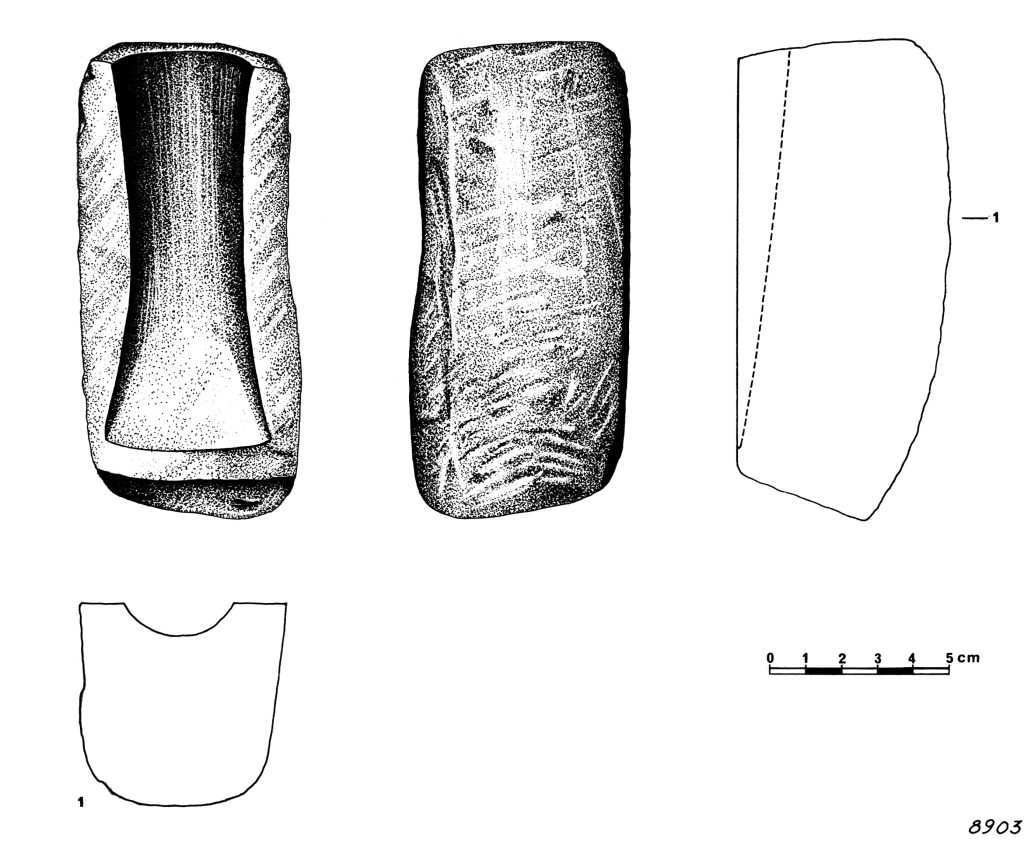Pieces of copper alloy. Et lite flatt stykke oksidert kobberlegering; den er delvis oppløst. Det kan ikke fastslås om dette er skrapmetall eller var en del av en gjenstand.
Context:
Found in a mountain shelter at Ruskeneset, in a small bay next to a body of water. The site was excavated in 1914-16 and 1974, and consists of two small rock shelters (Ruskeneset I and II) approx. 8-10 m.a.s.l., placed approx. 50 m apart. Ruskeneset I was partially destroyed by road construction around 1900 and the site was discovered when some objects, including a stone axe, were found. The shelter measured 10 x 5 m, height unknown. Ruskeneset II measures 15x 6 m, height 15 m. There were two main phases, a late Neolithic phase in both rock shelters and a phase dated to the Iron Age in shelter II (Brinkmann and Shetelig 1920). The finds include bones from 66 species, shells, hooks, harpoons, arrowheads and flint daggers. However, the Late Neolithic layer also includes material indicating a Bronze Age phase: bifacial arrowheads with convex bases, the pieces of copper alloy, a sherd of a soapstone vessel. The culture layers at both shelters were assessed as homogeneous, despite several sterile layers. Human bones were also found: in shelter II, some bones were found scattered in the cultural layer, and some bones and teeth from a child were found under a stone of white quartz. The bones from three skeletons were found outside the main activity area of crisis center I. These were not professionally excavated. The piece of copper alloy was found in Ruskeneset II, and a small lump of bronze was also found (B06824/26). The latter was analyzed and contained copper, tin and nickel. The lump was destroyed in the process. A possible crucible (B6914/c) was found in a mound of earth at Ruskeneset I.
Location:
Ruskeneset under Søreide (no. 35/9), Bergen, Hordaland
Date:
Late Neolithic or Bronze Age












